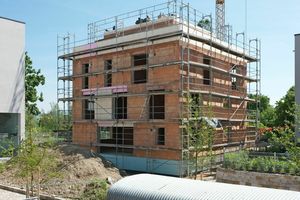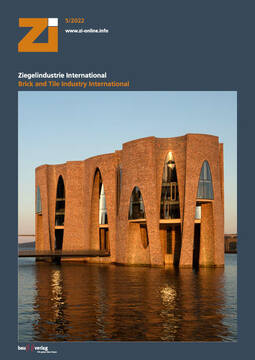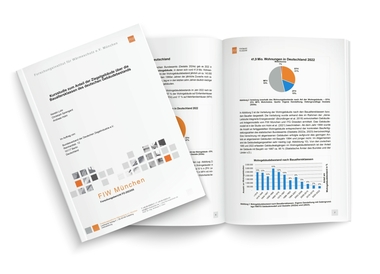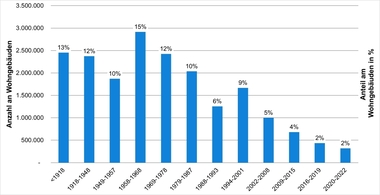Bricks most frequently used wall-forming building material in German residential construction in 2021
Bricks were again the most popular choice for the construction of residential buildings in Germany in 2021. This is shown by data from the Federal Statistical Office on completions in residential construction, which takes into account the predominantly used building material. At 29.6 percent, the majority of the 102,955 residential buildings completed last year were predominantly constructed using bricks. The second most common material used was aerated concrete, which accounted for 20.9 percent of the completed residential buildings. The proportion of residential buildings constructed predominantly with wood was 19.6 percent.
Bricks used for most single- and two-family houses
Bricks appear to be the building material of choice particularly for buildings with one or two apartments. In buildings with only one dwelling completed in 2021, bricks form the predominantly used building material in around 29.3 percent of cases. This is followed by aerated concrete with a share of around 23.0 percent and wood with around 22.5 percent.
In buildings with two dwellings, heavy clay building materials are far ahead. Around 34.9 percent of this class of house was completed using predominantly brick. Wood represents the second most preferred building material with 20.0 percent, followed by aerated concrete with 19.7 percent.
Only the class of multi-family houses with three or more apartments shows a different picture. Sand-lime bricks were predominantly used in 34.0 percent of completions. Bricks accounted for only 27.8 percent. The third most used building material in the multi-family housing sector was reinforced concrete (20.2 percent).
Slight decline compared with the previous year
Compared with the previous year, the shares of building materials in completed residential buildings changed only slightly. In 2020, brick accounted for 30.3 percent of total residential building completions, 0.7 percentage points higher than in 2021.
This trend stems primarily from buildings with one dwelling. Whereas in 2020, 30.3 percent of single-family housing completions were predominantly brick, in 2021 the figure dropped down 1.0 percentage point. For buildings with two apartments, on the other hand, the share in 2021 was 0.2 percentage points higher than in 2020 (34.8 percent). For buildings with three or more dwellings, the share also increased slightly, from 27.7 percent to 27.8 percent.
Supply-side disruptions depressed housing completions
Regardless of the choice of construction materials, the number of residential buildings completed declined massively. While 112,935 residential buildings were completed in 2020, the figure was only 102,955 in 2021, representing a decline of 8.8 percent. The main contributor to this was the class of buildings with one dwelling. While 87,275 of these were completed in 2020, the figure was 78,209 a year later, a decline of around 10.4 percent.
According to the Federal Statistical Office, supply-side disruptions were primarily responsible for the development. Supply bottlenecks and shortages of raw materials, significant price increases as a result of increased demand for building materials such as wood and steel in Germany and abroad, and high capacity utilization or staff shortages in the construction industry prevented companies and builders from implementing their projects.




